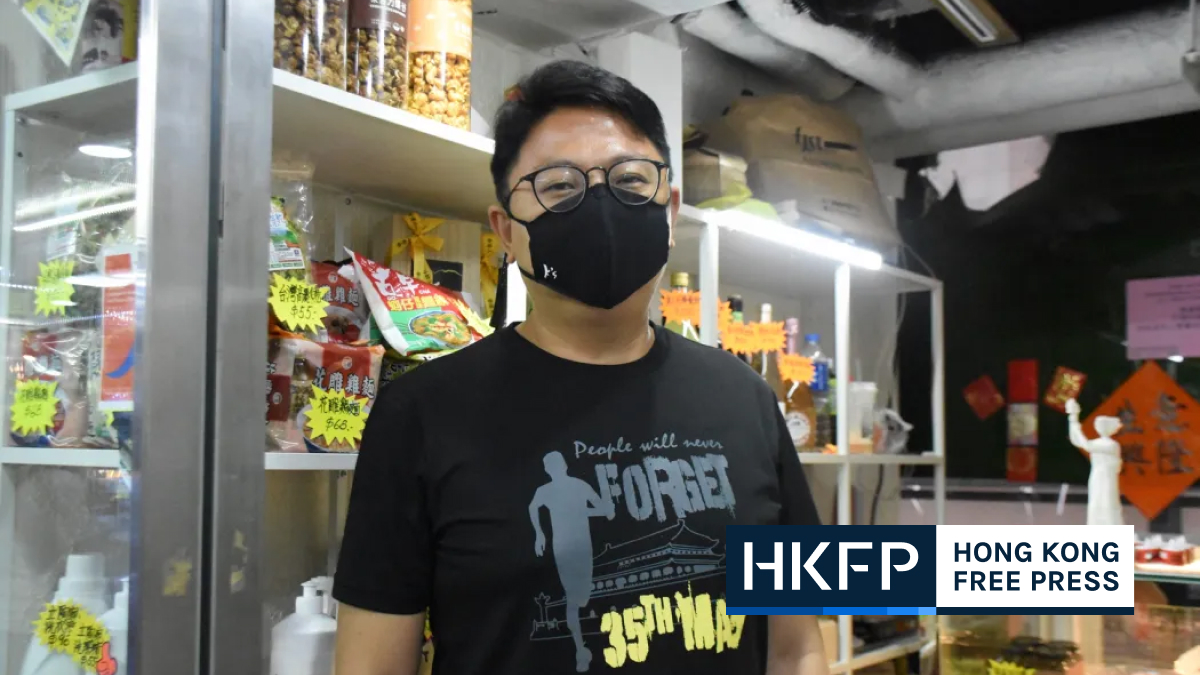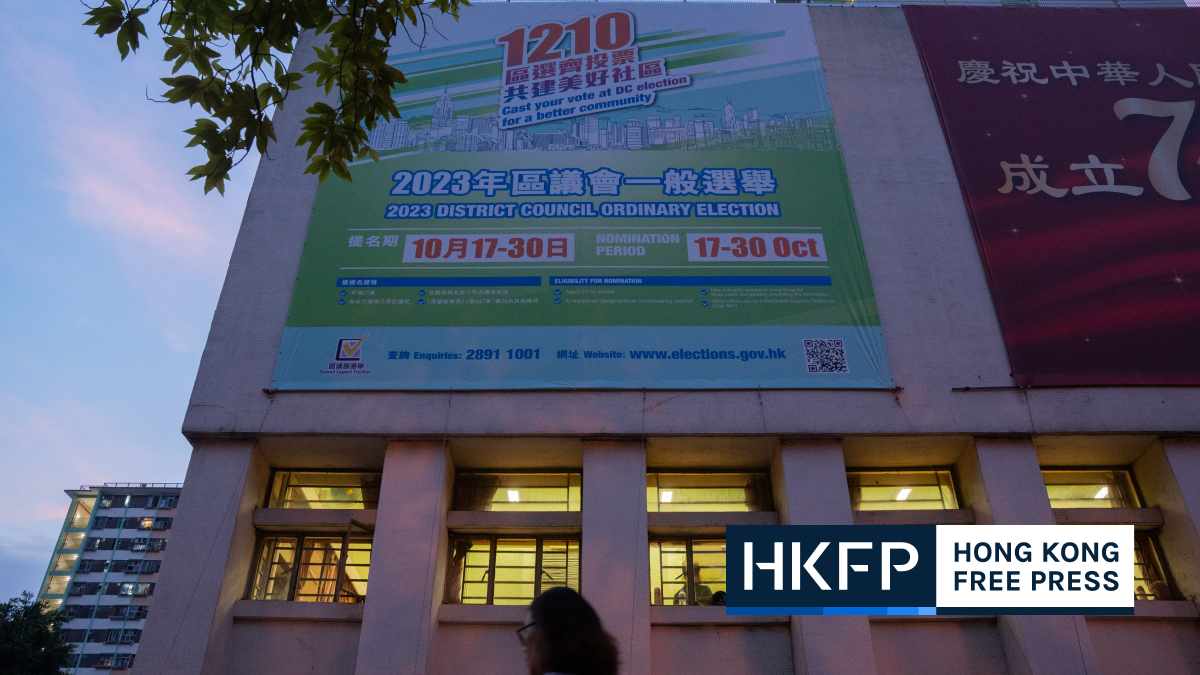For Pokfulam villager Tam Sau-wa, the short walk from her home to The Pokfulam Farm just across the road is like travelling back through time to her childhood.
Tam, better known as Wa Nui, grew up in the senior staff quarters of Hong Kong’s first dairy farm, now classified as a Grade I historic building and the cornerstone of a recent conservation campaign. Tam’s mother worked for the farm’s last manager, and the family lived on the complex until the company halted operations in the 1980s, almost a century after it was established in 1886.
Tucked behind two towering culinary schools, the farm’s main building resembles a cosy cottage complete with a brilliant white façade, sky-blue window frames and a tiled rooftop. Built in 1887, it complements the neo-gothic style Béthanie Chapel just next door.

On a hot and sunny September afternoon, Wa Nui was joined by her older sister Anka Tam – wearing a blue-and-white striped top that twinned with the building – to show HKFP around the revitalised farm. Restoration began in 2019 under a Development Bureau scheme and was completed earlier this year.

“There used to be a gate here – the main entrance – and as you walked inside, here was the ‘rose road, ’ which had roses planted on both sides of the path and was paved with stones. It was very beautiful,” said Wa Nui.
Childhood memories
Instead of ascending the stairs to the main building, where the farm manager and his family lived, Wa Nui and Anka turned to the former staff quarters where they spent most of their time, eager to tell their own story.

Pushing open the first door to the single-storey structure, which now serves as offices, the sisters quickly found the old kitchen where their mum would cook big meals and make food for festivities.
Although the room now resembles a pantry with a round dining table and other kitchen equipment, the sisters’ memories of its former iteration live on.

“Here was where we put the bucket of rice grain… The stone stove was here – we burnt firewood for cooking in the past, quite quaint,” Anka said as she gestured around the room.
Wa Nui, meanwhile, remembered the long nights they spent there helping their mother at the stove.
“When we were young, we liked tailing our mum to make rice cakes during the Lunar New Year. They took a long time to make… so we would sit here on some hay. Because we needed to keep adding firewood, we would spend the whole night in the kitchen,” Wa Nui recalled.

The sisters were equally eager to share memories about the room next door, where a total of six of them – five children and their mother – used to sleep. Anka recalled the packed environment. She estimated the room was no bigger than 150 square feet and likened it to the subdivided flats of today.
Five of them slept on a double bed made bigger by a wooden board, while their eldest brother would sleep on a camp bed, she said. The set-up made entering and exiting the room a challenge.
“Basically past evening time, we would not leave the bedroom. We would place a spittoon inside,” Anka said with a laugh, implying that the metal container would have been used as a makeshift toilet if necessary.
The dairy dietary
One of the perks of living on a dairy farm was being able to taste fresh milk.

The Dairy Farm Company was founded by Scottish surgeon Patrick Manson in the 19th century “to provide a regular supply of hygienic fresh milk for Hong Kong people” and “to reduce the price of cow’s milk so as to make it affordable by the city’s growing population,” according to an Antiquities Advisory Board document.
The farm at Pokfulam occupied a 120-hectare hilly site that was initially home to a herd of 80 cows, later growing to more than 1,000 animals. During the Japanese occupation, milk was reserved for Japanese consumption and cattle were shipped to mainland China.
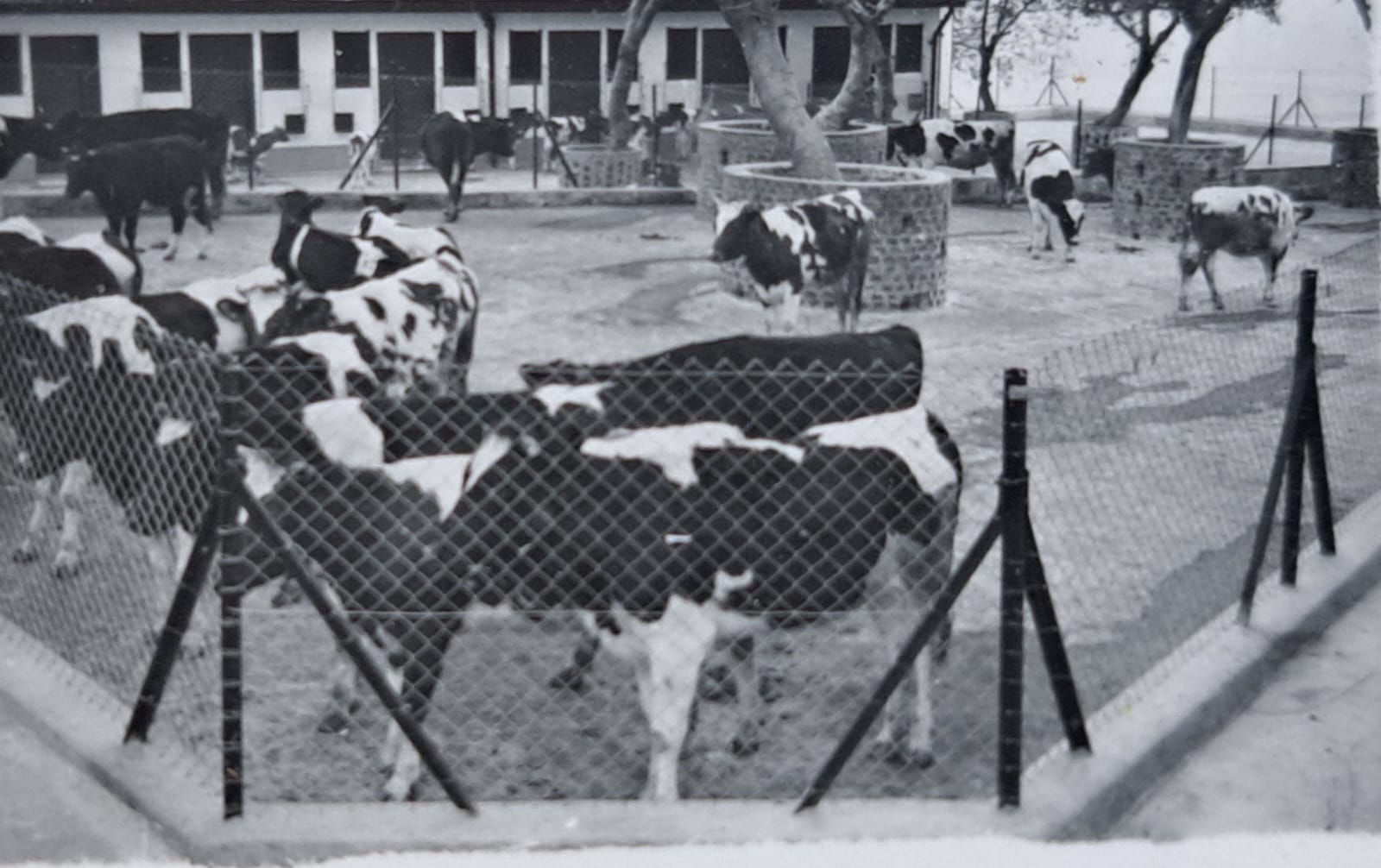
In the post-war years, the government acquired land around the farm to build vast housing estates, and by the 1980s, dairy farming had fallen out of official favour.
“The milk we drank was usually ‘first-hand’ because it was brought to the manager for tasting right after milking and sterilisation. We usually benefited from that,” Wa Nui recalled.
The milk was so good that the sisters would mix it with rice and call it a meal.

“Sometimes we snuck out to play and came home late. We would be given a plain bowl of rice – no other food – as punishment. So we thought of adding some milk to go with it and [found out] it was actually quite tasty,” Anka recalled.
When asked if they grew tired of dairy products, the sisters were quick to say no. There were fewer choices of snacks back in the day, they said.
“Sometimes our mum would make cake with it,” Anka said. “And there was something she would knock up – I don’t quite know what that was – but she would heat the milk until it was viscous, then add some sugar to it and make it almost like a paste. That was really yummy.”

After years of training their palettes with fresh milk, both women agreed that the dairy products nowadays taste much blander; “like drinking water,” as they put it. It was not only the milk itself but the experience of living on a farm that added to their perceptions.
“We saw how the cows were raised, how the workers cleaned them, fed them and herded them,” said Anka, who like her sister is now in her late 50s. “Compared to other people, we witnessed the whole process of a calf growing and becoming a cow, being raised and eventually being milked… So we cherished every single drop of milk and would not waste any.”
Revitalisation scheme
The sisters’ childhood home was abandoned and left unattended for more than two decades before receiving its Grade I historic building status in 2009.
A decade later, The Pokfulam Farm revitalisation project run by NGO Caritas Hong Kong and a group of Pokfulam villagers began, subsidised through a government scheme to conserve heritage buildings. Wa Nui, who has lived in Pokfulam village since the farm ceased operation, is a part of a group called Lok Gun Yuen that co-organises workshops for visitors to the farm to learn more about the village and its traditions.
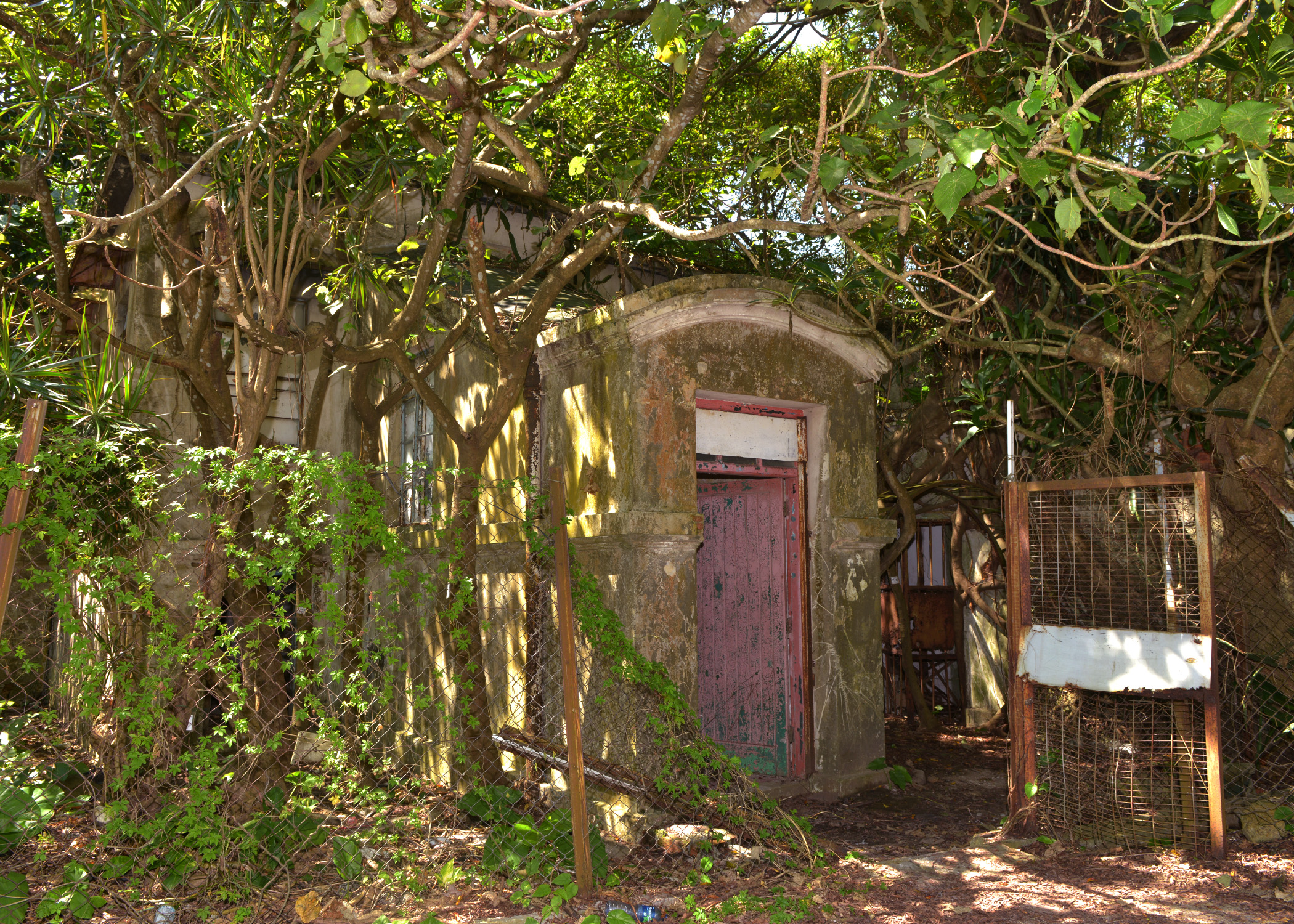

“For Pokfulam villagers, the Dairy Farm company carried a lot of memories. Many of them grew up here when the farm was in operation. Some may have family members who worked for the company, or they played near the farm, as if it was their backyard,” said Hazyl Lam, the heritage and business development manager at The Pokfulam Farm.

Lam said she hoped The Pokfulam Farm could act as a gateway to get people interested in the history of the village, as well as the area’s cultural landscape.
Meeting modern requirements
One of the hardest parts of revitalising the century-old buildings was achieving a balance between keeping the original structure and making alterations to ensure they met present day regulations.

Trying to recreate the main building’s original hip roof was the biggest challenge. Lam said the building had a flat roof for years, but old documents and photos suggested the initial design was a tiled hip roof.

To meet the requirement under Buildings Department legislation, multiple steel bars were added for support.

Although the additional structure did not blend that well with the classic interiors, it was a compromise that had to be made.
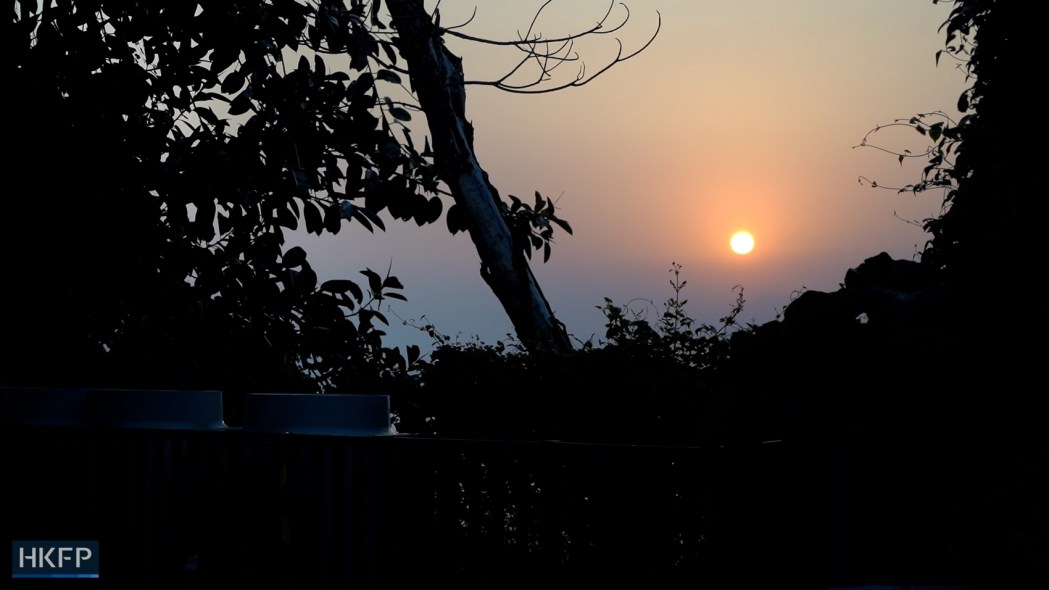
Another major additional structure was an accessible entrance for wheelchair users, which Lam said “accidentally became a hot spot for watching and photographing the sunset.”
Keeping a piece of history
For the Tam sisters, it means a lot that a part of their childhood is being preserved.

“At first, I thought this place was going to be torn down because it was sealed off… Once I learned that it would be conserved, I was so happy. I could not describe my excitement. Because what I experienced there while I was young can be passed on and learned by the next generation,” Anka said.
Wa Nui, meanwhile, hoped Hongkongers would cherish the heritage people fought so hard to protect.
“In Hong Kong, many things were torn down [to make way for development]. When everything is gotten rid of, it is gone forever. But now, these things have been [preserved] for people to see,” Wa Nui said.

“It’s just quite fun to do this together as a group, so I kept doing it,” she said, referring to her work with Lok Gun Yuen. “It made me feel like I helped a little, so that’s nice.”

The Pokfulam Farm had its soft opening in April, offering limited guided tours and workshops. Its official opening is slated for later this year.
Support HKFP | Policies & Ethics | Error/typo? | Contact Us | Newsletter | Transparency & Annual Report | Apps
Help safeguard press freedom & keep HKFP free for all readers by supporting our team

LATEST FROM HKFP
HKFP has an impartial stance, transparent funding, and balanced coverage guided by an Ethics Code and Corrections Policy.
Support press freedom & help us surpass 1,000 monthly Patrons: 100% independent, governed by an ethics code & not-for-profit.




